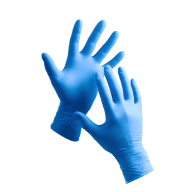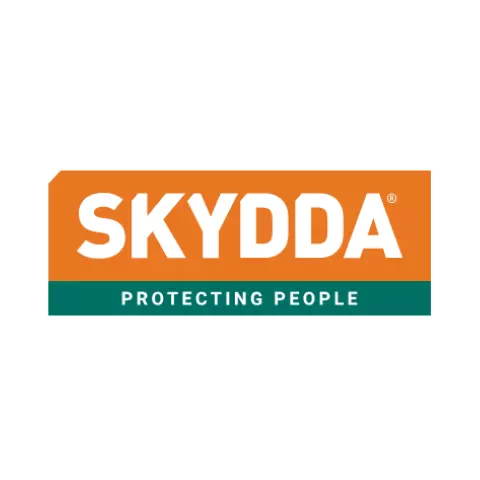Arbesko Safety shoes
Product description
Safety footwear with extra weight. ESD approved. Composite tip and soft metal-free nail anchorage protection. Upper: impregnated Super8 full grain leather with suede details. Durable. Cordura. Wear protection at the tip. Lining: breathable mesh, durable microfibre heel. Insole: - Moulded insole for stability and flexibility. Fitted with Ortholite X-40 insole. Midsole: Soft PU material with additional heel cushioning. Outsole: Flexible and heat-resistant nitrile outsole with good traction and effective shock absorption. Extremely roomy. Approvals: EN ISO 20345. Category: S3, SRA.
Identifies the protective material in the toe cap that shields against impacts and compression. Different materials offer varying levels of protection, weight, and comfort.
Withstands degradation from oil exposure, maintaining sole integrity and extending shoe life. Ensures reliable traction in oily environments.
Reduces impact on feet and joints, lessening fatigue during long hours on hard surfaces. Provides enhanced comfort for demanding work environments.
Enhances stability on slick surfaces, reducing the risk of slips and falls. Designed for reliable grip and secure footing in various work environments.
Offers robust defense against underfoot hazards. A reinforced sole prevents sharp objects from piercing through, protecting feet in risky environments.
The method used to secure the shoe to your foot, affecting ease of putting on/removing, adjustability for comfort, and workplace safety.
Indicates whether the footwear has protective reinforcement (Safety) or no special toe protection (Plain), affecting workplace safety compliance and injury prevention.
- Slip Resistant
- Impact Resistance
- Electrical Protection
- Water Resistance
Request a free sample
Test first and buy later. Visit any product page to request your free sample.
Standards and labels
Test results
General Requirements WRUThe WRU result in the context of standard EN ISO 20345:2011 represents Water Resistant Upper, which indicates that the footwear possesses an upper resistant to water penetration, thereby providing a certain degree of waterproof protection to the wearer's feet. Fundamentally, the test determining this result involves subjecting the upper part of the footwear to a water penetration test under specified conditions of pressure and duration. This ensures that water does not penetrate through the outer surface into the footwear up to a minimal threshold. The practical implication of achieving the WRU result under the EN ISO 20345:2011 standard is that the footwear is suitable for work environments or activities where exposure to water or moisture is prevalent, ensuring durability and increased comfort for the wearer over an extended period of wet conditions. This qualification is particularly crucial for industries like construction, outdoor work, or any professions where workers might be exposed to water around their feet.
General Requirements AEN ISO 20345:2011 sets standards for safety footwear intended for professional use, ensuring that such footwear provides adequate protection according to specified safety requirements. Rating A means the footwear has antistatic proterties. The practical implication of an A rating result is that the footwear is certified as having met the necessary conditions for standard professional use, which can reassure procurement professionals of the product's basic safety compliance specific to an industrial or harsh working environment. Such comprehensive testing and certification mean that businesses can ensure worker safety and regulatory compliance when procuring such footwear.
General Requirements CRThe standard EN ISO 20345:2011 encompasses general requirements for safety footwear to ensure they provide adequate protection in various occupational environments. Rating 'CR' signifies that the footwear has a cut resistant upper ensuring enhanced protection. The test method involves assessing the material's resistance to splitting or cracking under certain conditions, which simulates real-world industrial hazards involving sharp objects or surfaces. Practically, this result ensures that the footwear is suitable for environments where there is a risk of materials splitting or getting caught, thereby providing essential safety benefits to the user.
General Requirements EThe standard EN ISO 20345:2011 encompasses general requirements for safety footwear to ensure they provide adequate protection in various occupational environments. The specification of test result E indicates that the footwear has undergone and successfully met the electrical insulation performance requirements. This specific test assesses footwear's ability to prevent electrical current from passing through the body from the ground, a critical safety feature for those working in environments with electrical hazards. The test involves placing the footwear on a conductive surface and measuring the resistance when a specified voltage is applied, thereby ensuring the footwear provides the necessary protection against electrical hazards. This result is significant for safety footwear, guaranteeing wearer protection in electrical environments and reducing the risk of electrocution, thus contributing to safety standards compliance for occupational footwear in the European market.
General Requirements PEN ISO 20345:2011 specifies safety requirements for footwear used in a range of industries to protect wearers from mechanical risks and other workplace hazards. The 'P' designation indicates that the footwear has been tested for penetration resistance, which means it can withstand a force of up to 1100 Newtons from sharp objects like nails. This test is conducted by applying a specified force to a nail or similar sharp object against the sole of the footwear to ensure it cannot penetrate through to the foot. Footwear meeting this requirement is essential for industries where workers are at risk of stepping on sharp objects, such as construction or manufacturing, providing a critical level of protection to the wearer's feet.
General Requirements S3The EN ISO 20345:2011 standard specifies the general safety requirements for protective footwear used in various industries. The S3 designation under this standard means the footwear has met certain criteria, including basic toe protection, anti-static properties, energy absorption of the seat region, water resistance, fully enclosed heel, cleated outsole, and penetration resistance by a steel midsole. This classification involves specific test methods like compression and impact tests on toe protection, antistatic resistance tests, energy absorption verification at the heel section, water penetration, and absorption tests to ascertain the upper material's resistance, and penetration resistance tests to ensure the protective features of the outsole and midsole. For industries requiring protective footwear that can withstand mechanical risks, moisture, and sharp objects, achieving an S3 result guarantees a high safety level, making footwear that meets this requirement suitable for environments with increased moisture and at risk of foot penetration by sharp objects.
General Requirements SBThe SB result in the EN ISO 20345:2011 standard for general requirements refers to basic safety requirements for footwear, indicating a basic level of protection. This result means that the footwear meets essential safety performance standards, including a toe protection against a 200-joule impact. The testing method involves subjecting the toe area of the footwear to impacts and compression at specified energy levels to ensure it can protect the wearer's toes against potential workplace accidents properly. The practical implication of an SB result for footwear under this standard is that it is suitable for work environments where toe protection is necessary, but where there may not be special requirements for additional resistance against water penetration, or heat, which are covered by other codes in the standard (like S1, S3, etc.). This classification helps procurement professionals select the appropriate safety footwear based on the specific hazards present in the workplace environment.
General Requirements FOThe standard EN ISO 20345:2011, specifically its General Requirement FO, pertains to footwear containing fuel oil-resistant outsoles. When footwear under this specification successfully meets the FO requirement, it implies that the footwear's outsole has been tested and confirmed to resist degradation due to contact with fuel oil. The test involves exposing the outsole material to fuel oil for a determined period, typically 22 hours, at a controlled temperature of 22°C. This test assesses the change in volume and properties of the outsole following fuel oil exposure by measuring its tensile strength and elongation before and after the exposure. For procurement professionals, a positive FO result indicates that the footwear's outsole will maintain its mechanical performance and integrity when in contact with fuel oil, making it suitable for industries where oil exposure is frequent, providing durability and reliable performance under such conditions.
CE Marking is a label that shows a product meets certain safety and environmental standards set by the European Union. To get the CE Marking, a company must test and certify their product meets these standards. CE Marking is required for many products sold in the EU, including electronics, machinery, toys and medical devices. It helps ensure that products are safe for consumers and the environment, and allows for easy trade within the EU.
Textiles are materials made from fibers, such as cotton, wool, or polyester. In Europe, there are rules for how textiles should be made, sold, and labeled. These rules are set by the European Union. These rules ensure that textiles are safe and do not contain harmful chemicals, that they are labeled correctly and that the use of certain dangerous chemicals are banned. These rules are set to protect the health and safety of consumers and the environment. Companies that make or sell textiles in the EU must comply with these rules.
Skydda delivery terms
Free delivery for all Skydda products
234,66 €
Price per pair
234,66 € / pair
Shipping fee is 6,33 € for orders under 150,00 €
Sold in units of one pair
Need larger quantities?
Other products you may like
Recently viewed
Need help?
Get help from our experts
Other products you may like
Similar products you may like
Recommended for you
Skydda
Delivery time: 3 business days
Supplier shipping fee 6,33 €
Free shipping on orders over 150,00 €



Find +150,000 products from hundreds of brands
Autonomous sourcing platform
The most efficient way to source and order supplies for your operations
Sourcing
Ordering
List products you’re looking for and we’ll find the best products and prices for you – all for free.
Need help?
Get help from our experts
